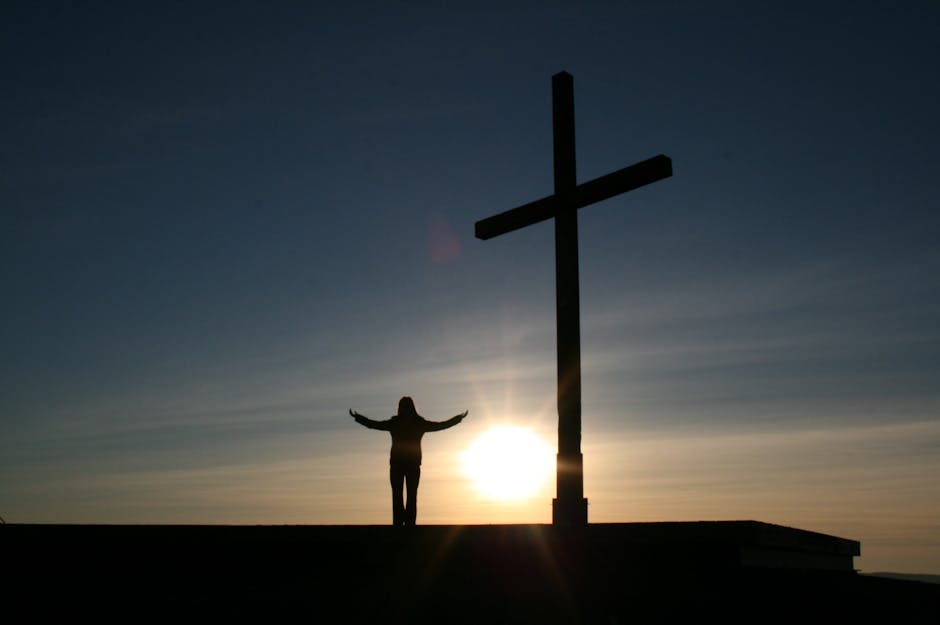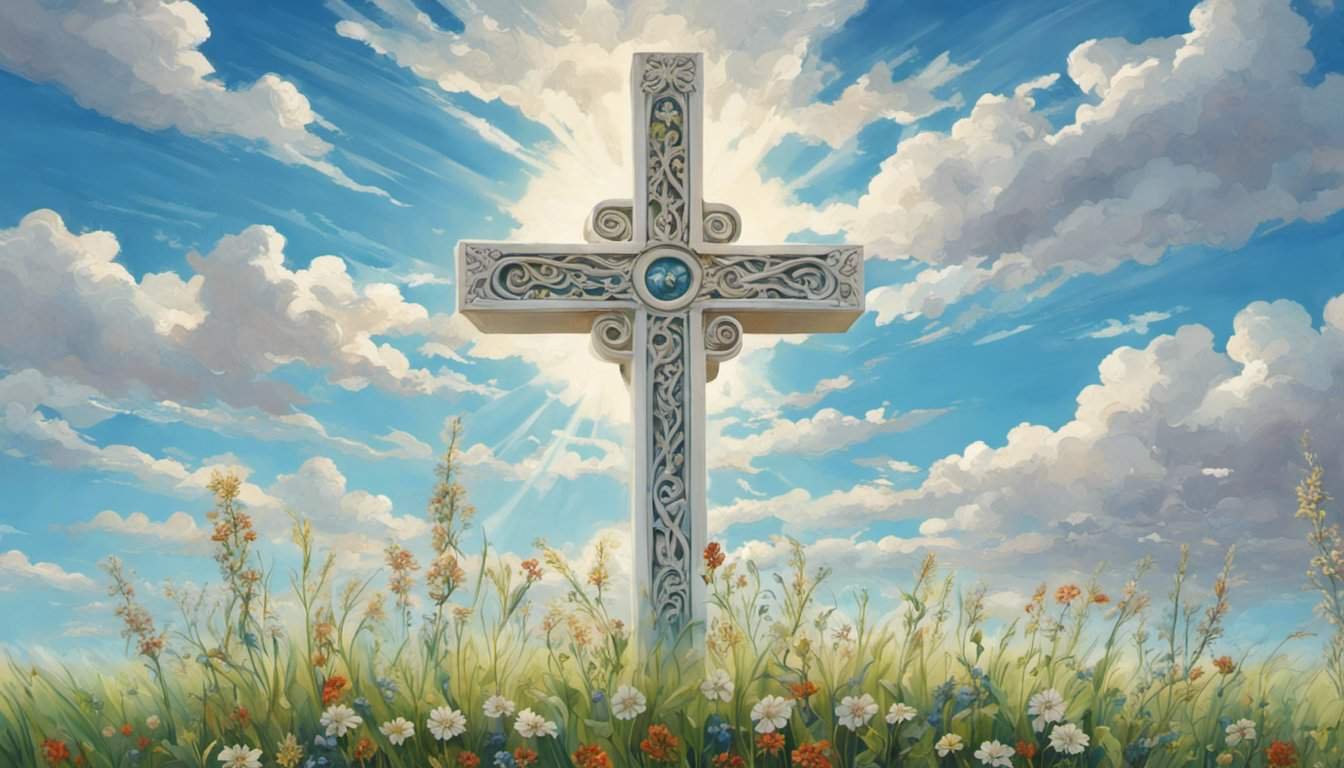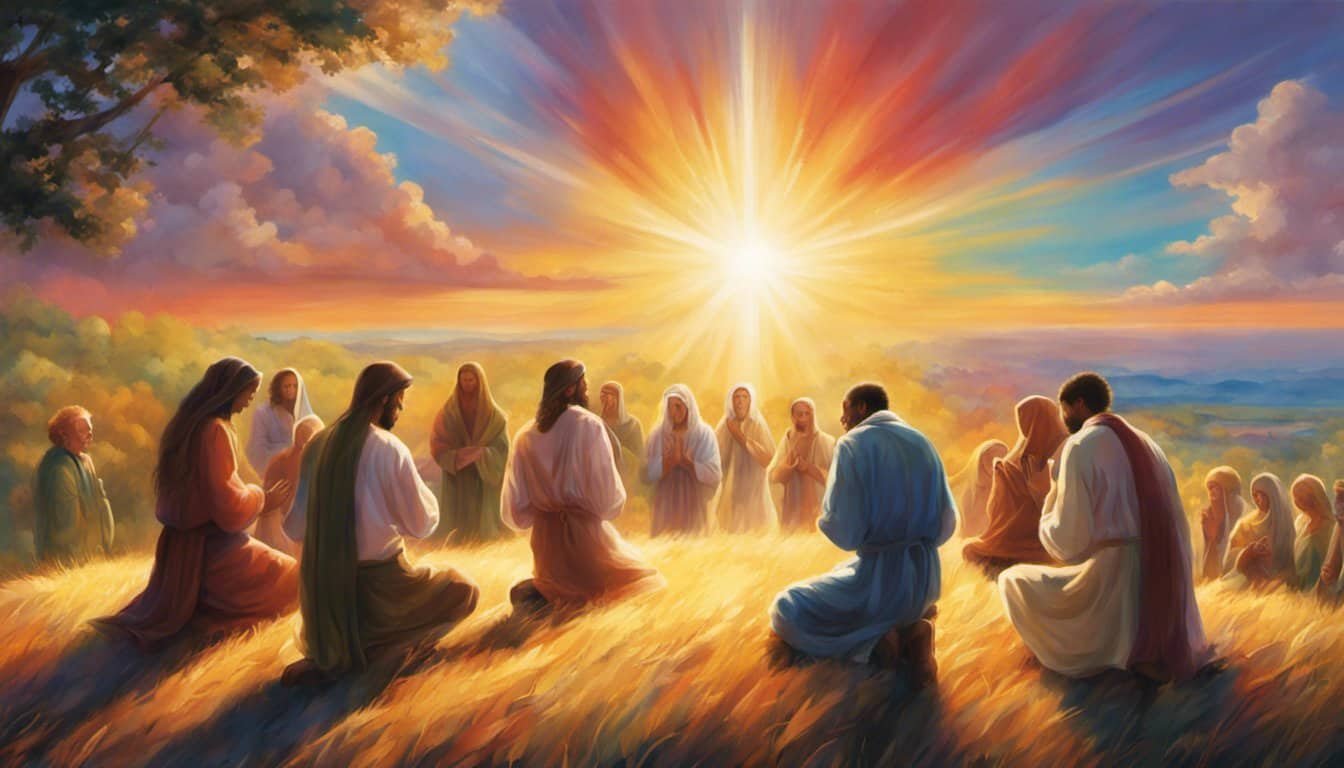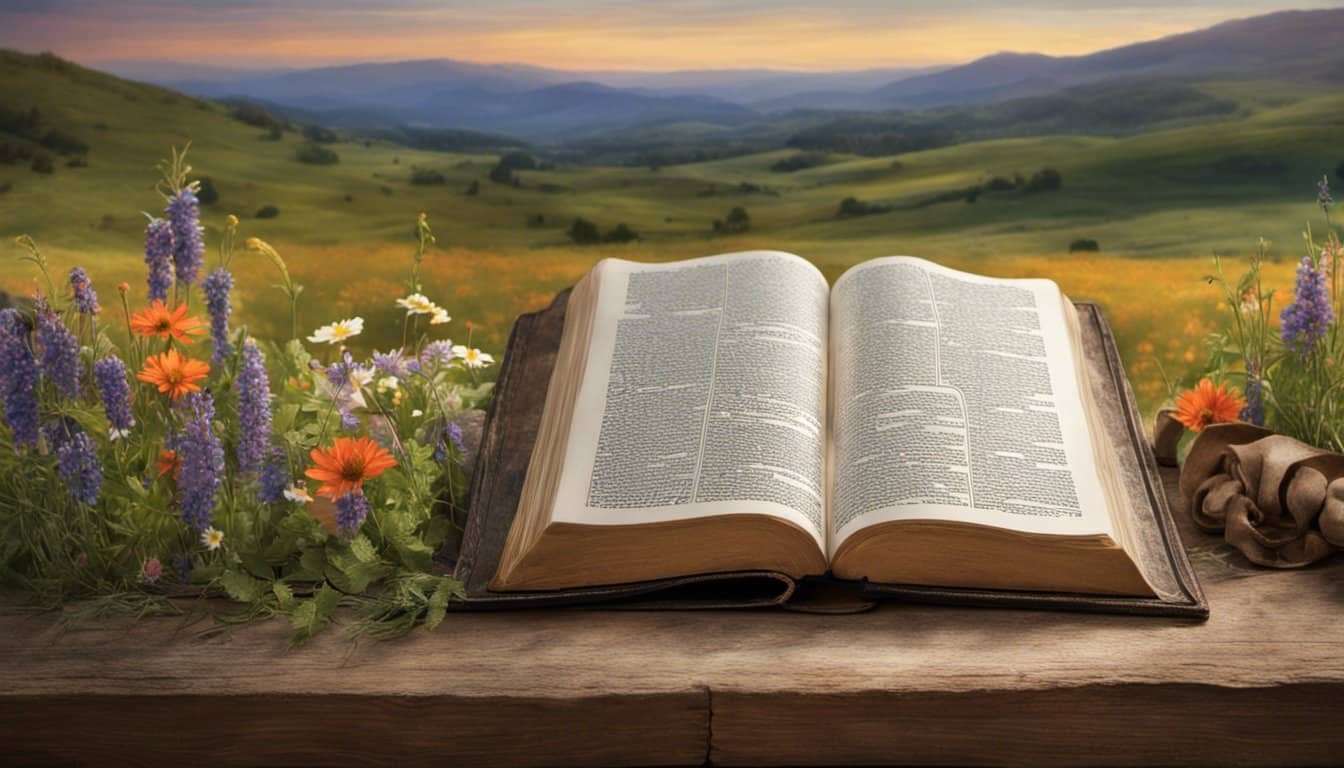Zechariah’s visions have intrigued scholars and believers alike for centuries. In chapters 1 through 6, he unveils a tapestry of prophetic symbols that reveal deep spiritual truths and future events. These visions aren’t just ancient stories; they offer insights into faith, perseverance, and divine purpose.
Exploring these chapters uncovers the rich imagery and profound meanings behind each symbol. From the colorful horsemen to the lofty temple, every element holds a key to understanding Zechariah’s message. Delving into these prophetic symbols invites readers to connect with the timeless wisdom that continues to inspire today.
Historical Context of Zechariah’s Visions

Zechariah prophesied between 520 and 518 BCE during the early Persian period. This era followed the Babylonian exile, a time when the Jewish people returned to Jerusalem under Persian King Darius I. The primary focus was rebuilding the Temple, which had been destroyed by the Babylonians in 586 BCE.
Political Landscape
Under Persian rule, the Jewish community enjoyed relative autonomy. King Darius I supported the reconstruction efforts by providing resources and official backing. However, challenges persisted:
- Opposition from Local Neighbors: Neighboring groups, such as the Samaritans, opposed the rebuilding, fearing it would strengthen Jewish influence.
- Internal Struggles: The community faced internal divisions between those eager to rebuild and others hesitant due to past hardships.
Social and Religious Climate

The returned exiles sought to restore their religious practices and societal structures. Key aspects included:
- Temple Reconstruction: Reestablishing the Temple was central to restoring religious life and communal identity.
- Spiritual Renewal: Leaders like Zechariah emphasized repentance, worship, and adherence to the Torah to unify the people.
- Economic Challenges: Rebuilding efforts required significant financial resources and labor, leading to economic strain.
Zechariah’s Role
As a prophet, Zechariah played a crucial role in encouraging the people to persevere amidst these challenges. His visions served multiple purposes:
- Reinforcing Hope: Zechariah’s messages aimed to inspire the community, assuring them of divine support in their endeavors.
- Guiding Reconstruction: The visions provided symbolic guidance on rebuilding the Temple and renewing the covenant with God.
- Addressing Obstacles: By interpreting current struggles through prophetic symbols, Zechariah offered solutions and spiritual direction.
Key Events During Zechariah’s Ministry
- Temple Completion: The Second Temple was completed in 516 BCE, marking a significant milestone for the Jewish community.
- Renewed Commitment: Post-construction, there was a renewed commitment to religious observance and community rebuilding.
- Prophetic Influence: Zechariah’s prophecies continued to influence subsequent leaders and the overall spiritual direction of the people.
Understanding this historical context enhances the interpretation of Zechariah’s visions, revealing how they addressed the immediate concerns of the returned exiles and provided a framework for their spiritual and physical restoration.
Overview of Zechariah Chapters 1-6
Zechariah chapters 1-6 present a series of prophetic visions filled with symbolic imagery and messages of restoration. These chapters address the spiritual and physical rebuilding of Jerusalem, the role of leadership, and the coming of a messianic figure.
Chapter 1: The Vision of the Horsemen
Zechariah’s first vision features four horsemen traveling through heaven. Each horse and rider represents different aspects of God’s surveillance and concern for His people. The horsemen patrol the earth, symbolizing God’s ongoing watch over Israel. This vision emphasizes divine oversight and the assurance of God’s presence during the restoration process.
Chapter 2: The Measuring Line and Restoration
In the second chapter, Zechariah sees a man with a measuring line measuring Jerusalem. This act signifies the expansion and protection of the city. Following this, angels announce that Jerusalem will be a populous city without walls, highlighting God’s promise of safety and growth for the inhabitants. The chapter underscores the comprehensive restoration and divine favor bestowed upon Jerusalem.
Chapter 3: The High Priest Joshua
Chapter three portrays Joshua the high priest standing before the angel of the Lord, with Satan accusing him. The Lord rebukes Satan, declaring Joshua righteous despite his faults. Joshua receives clean garments, symbolizing purification and restoration. This vision reinforces the theme of spiritual renewal and God’s commitment to purifying and restoring His leadership.
Chapter 4: The Golden Lampstand and Olive Trees
Zechariah’s fourth vision features a golden lampstand with seven lamps and two olive trees on its sides. The lampstand represents the Temple, and the olive trees symbolize the spirit of God empowering Zerubbabel and Joshua. The vision conveys that God’s spirit fuels the rebuilding efforts, ensuring the success of the restoration work. It highlights divine guidance and the collaboration between spiritual and earthly leaders.
Chapter 5: The Flying Scroll and Woman in the Basket
In chapter five, Zechariah sees a large flying scroll containing curses against thieves and those who swear falsely. This symbolizes the removal of sin and the enforcement of God’s law. Additionally, a woman in a basket, representing wickedness, is carried away to Babylonia. This act signifies the complete eradication of evil from Jerusalem, ensuring a pure and righteous community.
Chapter 6: The Four Chariots and The Branch
The sixth chapter introduces four chariots emerging from between two mountains of bronze. These chariots represent the four spirits of heaven executing God’s judgment and protection over the earth. Concluding the chapter, Zechariah sees a branch growing, symbolizing the coming of the Messiah who will build the Temple of the Lord. This vision points to divine intervention and the establishment of a righteous and enduring kingdom.
Symbolic Interpretations

Zechariah’s visions contain rich symbolism that conveys deep prophetic meanings. Understanding these symbols illuminates the messages intended for the original audience and their relevance today.
Prophetic Symbols and Their Meanings
Zechariah utilizes various symbols to represent spiritual and political realities:
- Four Horsemen: Symbolize God’s active surveillance and protection over Israel during restoration.
- Measuring Line: Indicates the planned expansion of Jerusalem and God’s promise of security for its inhabitants.
- Golden Lampstand and Olive Trees: Represent divine empowerment and the essential support for rebuilding efforts.
- Flying Scroll: Signifies the removal of sin and the establishment of righteousness within the community.
- Woman in a Basket: Embodies the eradication of wickedness from Jerusalem.
- Four Chariots: Depict God’s judgment being executed upon the nations oppressing Israel.
- The Branch: Points to the coming Messiah and the establishment of a just and enduring kingdom.
These symbols provide a visual language that conveys complex theological and prophetic concepts, making the visions accessible and impactful.
Theological Significance of the Visions
The visions in Zechariah chapters 1-6 hold significant theological implications:
- Divine Sovereignty: Emphasizes God’s control over history and His active role in guiding Israel’s restoration.
- Hope and Restoration: Offers assurance of renewal and a prosperous future for the Jewish people amidst challenges.
- Spiritual Renewal: Highlights the necessity of moral purification and wholehearted commitment to God’s purposes.
- Messianic Expectation: Foretells the arrival of a messianic figure who will lead and sustain the rebuilt community.
- Judgment and Justice: Reinforces the idea that God will uphold justice by addressing wickedness and supporting the righteous.
These theological themes provide a framework for understanding God’s intentions for His people and the broader implications for faith and practice.
Application of Zechariah’s Visions Today
Zechariah’s visions aren’t just ancient symbols; they hold valuable lessons for us today. Understanding these prophetic messages can inspire personal growth and community strength.
Embracing Divine Oversight
Zechariah introduces four horsemen watching over Israel, reminding us that there’s a higher power guiding our lives. In times of uncertainty, recognizing divine oversight can provide comfort and direction. For instance, when facing challenging decisions, reflecting on this vision encourages trust in a greater plan.
Expanding Our Horizons
The measuring line in Zechariah’s second chapter signifies growth and expansion. Today, this can translate to personal development and community building. Setting clear goals and striving for continuous improvement mirrors the expansion of Jerusalem. Have you set measurable goals for your personal or spiritual growth this year?
Pursuing Spiritual Renewal
Joshua the high priest’s purification highlights the importance of cleansing and renewal. In our daily lives, this means regularly evaluating our actions and thoughts. Incorporating practices like prayer, meditation, or community service can help maintain spiritual health. How do you ensure regular spiritual renewal in your routine?
Empowering Reconstruction Efforts
The golden lampstand and olive trees symbolize divine empowerment for rebuilding. This vision encourages us to take active roles in restoring and improving our communities. Whether it’s volunteering, mentoring, or supporting local initiatives, every effort contributes to a stronger, more vibrant community.
Eliminating Negative Influences

The flying scroll and the woman in a basket represent the removal of sin and wickedness. In today’s context, this calls for addressing and eliminating negative behaviors and influences in our lives. Setting healthy boundaries and making conscious choices supports a more positive and fulfilling life.
Anticipating Messianic Hope
The branch in Zechariah’s vision points to the coming Messiah, embodying hope and renewal. This anticipation inspires us to live with purpose and expectation. Embracing this hope can strengthen our faith and motivate us to contribute positively to the world around us.
By applying these visions to our modern lives, we not only honor Zechariah’s prophetic messages but also find practical ways to enhance our spiritual journeys and community interactions.
Conclusion
Zechariah’s visions offer a window into divine purpose and hope that resonates through the ages. They remind us that even in times of rebuilding and renewal, there’s a guiding hand shaping our path.
These prophetic symbols encourage personal growth and community strength today. By reflecting on the themes of restoration and empowerment, individuals can find inspiration to overcome challenges and contribute positively to their surroundings.

Embracing the lessons from Zechariah fosters a deeper connection to both history and faith. It invites everyone to seek meaning and purpose, drawing on timeless wisdom to navigate modern life with resilience and optimism.












